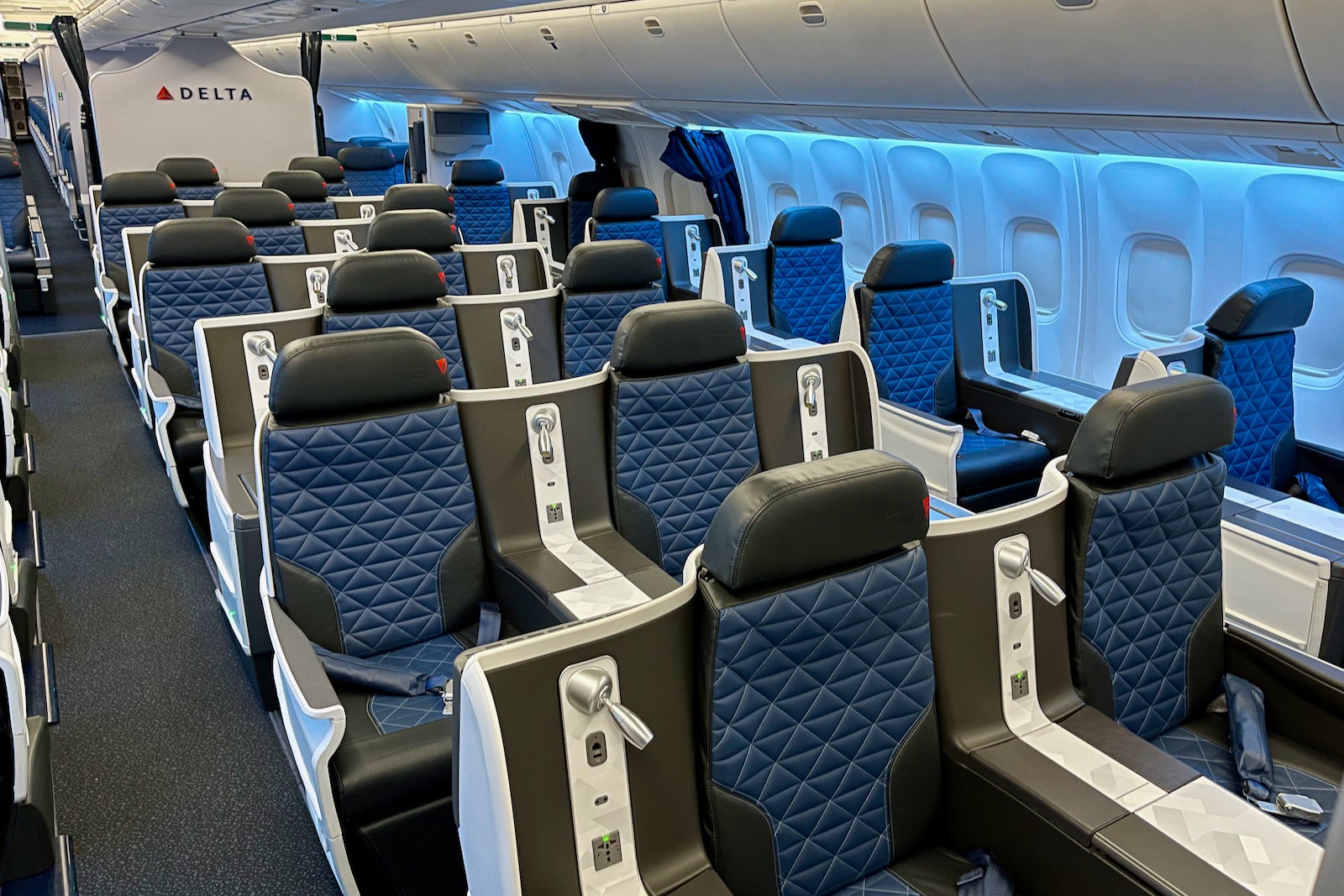The secret behind the curtains that you see around business-class pods
Have you ever walked up and down the aisle during a long-haul flight and noticed that one (or more) business-class pods were enclosed with thick curtains?
It doesn't happen on every flight, but when it does, I'm always jealous of whoever's resting inside. It always looks like they've scored the ultimate business-class upgrade, in what's arguably the most private suite on the plane.
Well, turns out that these seats are reserved for someone very special, and it's not a paying passenger. In fact, it's perhaps the most important person on the plane — the pilot.
Many long-haul flights are staffed with ten or more flight attendants, as well as extra relief pilots. While cruising at 35,000 feet with most passengers sleeping, the crew can — and must — take a break. On the longest flights, the crew works in shifts — only a portion of flight attendants and pilots are needed at any one time.
Sign up for TPG's free new biweekly Aviation newsletter for more airline and airport-specific news!
This is required by the Federal Aviation Administration, the governing body that regulates all aspects of civil aviation in the U.S., as well as government agencies abroad. This way, the crew will be well-rested in order to deliver proper service or assist during an emergency.
The same is true in the cockpit. Only two pilots are required to be on duty at a single time. The others rest up until it's their turn to be at the controls.
And where exactly does the crew go during the longest flights?
Well, it depends on the plane. On select ones, like Delta's retrofitted Boeing 767-300 and JetBlue's new Airbus A321LR, the relief pilots will be resting in a lie-flat pod, with thick curtains drawn around them for additional privacy from paying passengers.

There's even an industry term for this seat, the "crew rest." In fact, the FAA has a classification system for crew rest facilities.
- Class 1: a physically separated space from the cockpit and passenger cabin
- Class 2: lie-flat seat and separation from the cabin with a thick curtain to provide darkness and some sound mitigation
- Class 3: any cabin seat with at least 40 degrees of recline and leg and foot support
As you see, the biz pod with curtains is considered a Class 2 rest facility according to the FAA. It's not as private as a dedicated crew bunk, but on smaller planes like the Boeing 767 or Airbus A321 that don't fly ultra-long-haul flights, a Class 2 space will suffice.
In fact, on United's Boeing 767s, you can snag a seat in a Class 3 crew rest when it's not being used for international flying. There are four extra-reclining extra-legroom seats located in row 43 and 44 that are available for selection when they're not being used by the crew.
If you end up on one of those seats, you'll enjoy the leg rest, footrest and 40 degrees of recline.
As for Class 1 crew rests, they exist on the largest planes that fly the longest routes, like the Boeing 777. They're located in separate compartments from the passenger cabin. In most cases, you'll find them hidden up a set of stairs either at the forward or rear of the aircraft.
Inside, you'll find a handful of lie-flat bunks, with individual thermostats and other interesting items, including smoke detectors, fire extinguishers, flashlights and portable oxygen containers for use in an emergency. There are also comfort items, such as power outlets, a small mirror, coat hooks and a phone to call the other flight attendant stations.
So, the next time you see the curtains drawn in the biz cabin, now you'll know who's inside. Just don't open them to disturb a pilot who's resting.
